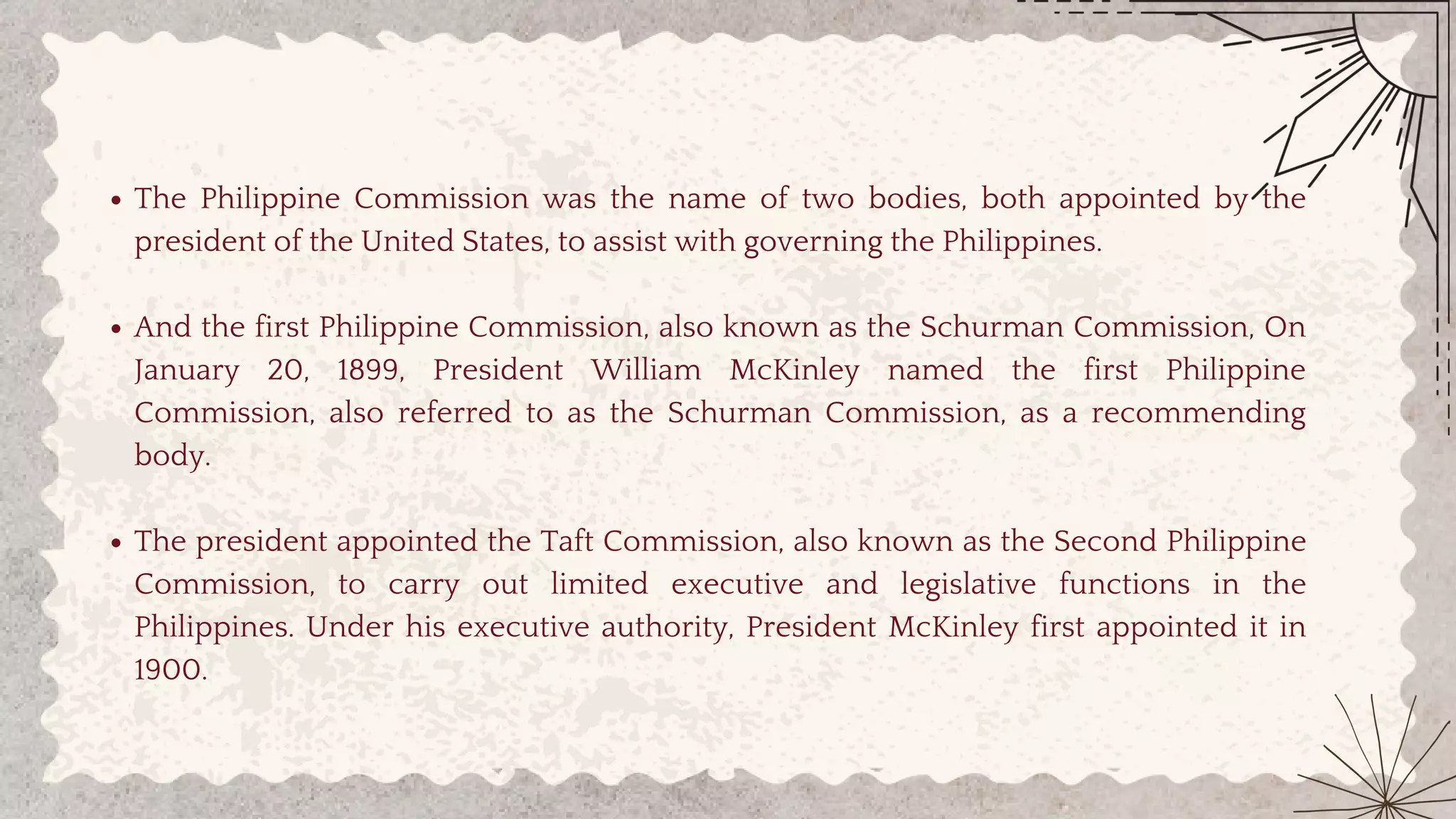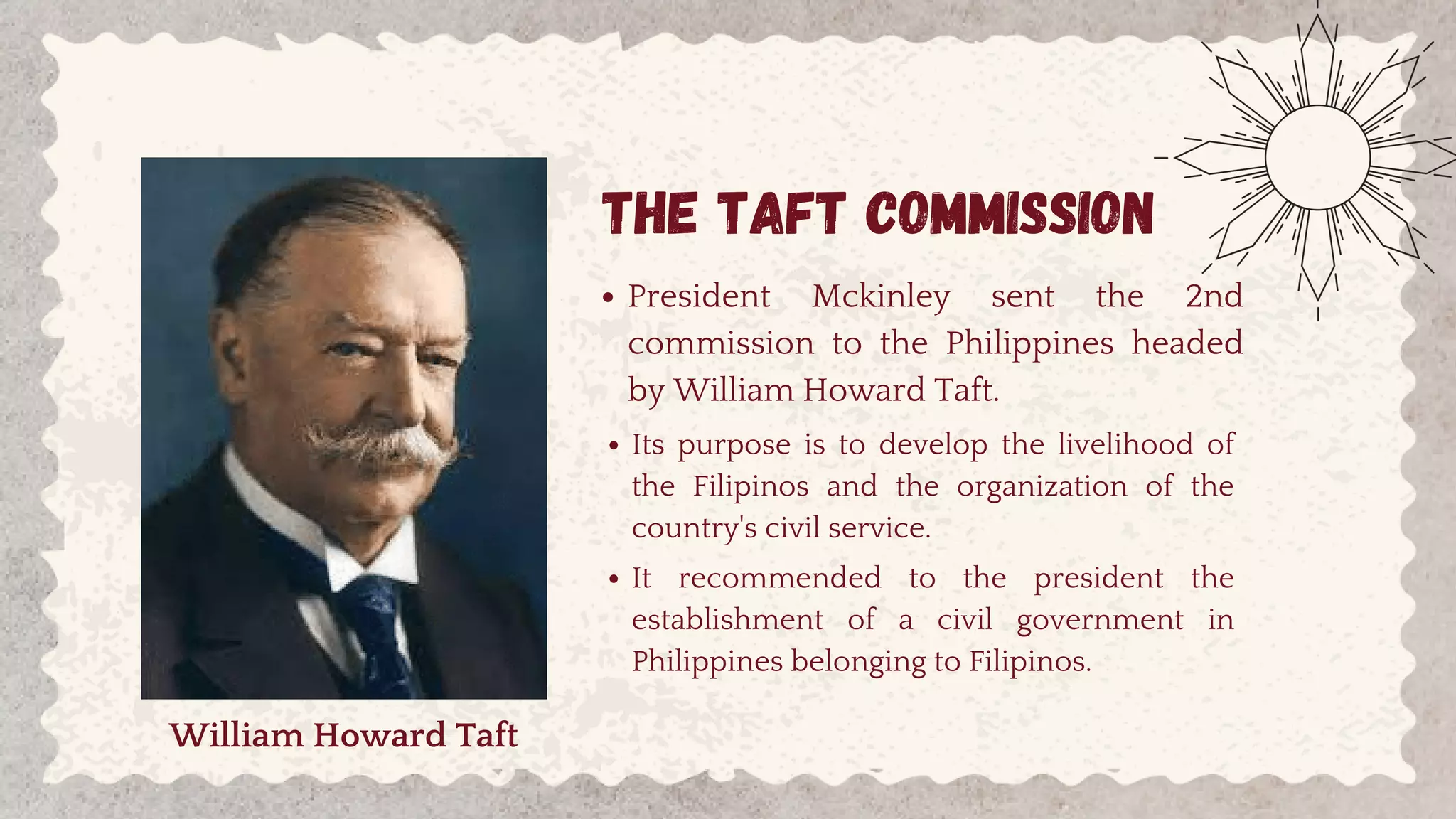The document discusses the governance of the Philippines under American rule from 1899-1946. It covers the establishment of the Philippine Commissions to help govern the country, the creation of civil government through laws like the Philippine Bill of 1902 and Jones Law of 1916, and developments in areas like education, economic growth, and religion. It also notes some negative consequences like the Philippine-American War and cultural impacts. The country transitioned towards independence, culminating in the establishment of the Commonwealth of the Philippines in 1935 and full independence in 1946.






















































